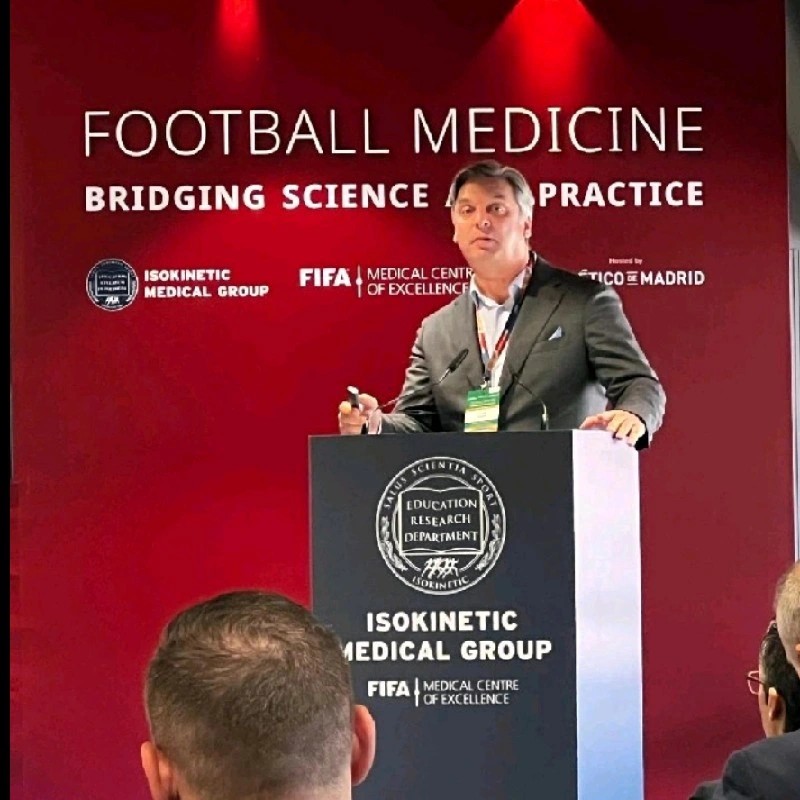Welcome to the Research and Strategy Services at in today's fast-paced.


As a sports medicine researcher, clinical practitioner and performance specialist, I’ve spent the last ten years trying to understand and push the boundaries of how we can optimally condition and rehabilitate athletes. An overarching conclusion I’ve reached is that neuroscience and the modern rise of sports neurotechnologies have a great deal to offer, and have already yielded highly valid ways to take sports to the next level. Yet the main challenge to their success is still a lack of understanding that the brain rules everything in the body. Here I’ll cover three cornerstone statements and explain why this simple paradigm has so much to offer the sports world, and then cover where this is leading.
It sounds like a bold statement, but the fact that the brain and central nervous system rules everything in the body, is actually an elementary conclusion. The immune system, the autonomic system, the endocrine system, sensory systems including perceptual processes like proprioception, thermoception and nociception, are all guided by our biological supercomputer network of neurons. In the brain alone the are between 75-125 billion neurons, which then extends it’s reach throughout every part of the body across 90,000 miles of nerves, also composed of neurons.
The central and peripheral nervous systems are actually more like an extension of the brain, somewhat like the roots of a tree. In some cases, these connections are very direct, for example single neurons form nerve bundles from the brain right down to the feet for the purposes of fast reactions. So when you bend down to touch your toes, the pain that you feel is literally individual neurons that span the whole length of your body being stretched. Even while you sleep, your brain is working hard to regulate your digestive system.
As neurons are on/off processing units just like transistors, the human body essentially functions like a computer, constantly processing biological information. Without these neuronal computations, everything stops. The key takeaway is that to properly understand physical processes, we have to understand them from a systems perspective where everything, to some degree or another, is regulated by the brain and it’s innervating nervous systems.
Traditionally, physical injuries have been assumed to be mostly physical in cause, for example due to particular muscular or joint weaknesses that are unable to withstand the demands of certain exercises. As such, rehabilitation has almost exclusively been focused on building up these physical systems to better withstand such demands. Of course this approach is valid, however it is not the whole picture.
Research conducted by Professor Faubert investigated whether ACL injuries, which are typically self-inflicted due to impairments in motor-coordination, could be influenced by the cognitive state of athletes. To do this, athletes were tested on jump sequences, and also on the same jump sequences while performing NeuroTracker to simulate the cognitive loads of actual sports performance. Force plate and motion tracking analysis revealed that,
‘‘…hip and knee kinematics changed significantly while jumping with NeuroTracker, compared to just jumping alone. Specifically, the largest effect was a change in knee abduction angle, resulting in increased strain on the ACL with 60% of the participants. Our findings suggest that some people are more susceptible to these types of injuries than others. It also suggests that using NeuroTracker while performing certain jumping drills may be a valid method to identify these people.’’
Essentially this study discovered that when the brain has low cognitive load, there was no ACL risk for the participants, but when mental demands related to competition are added, many were susceptible to injury. This isolates brain functions as a specific cause of injury risk.
The study provides a nice example of how a tool like NeuroTracker can be used both as simulation of in-game cognitive loads, and also as a method to safely provide objective metrics that can identify individuals at risk of physical injuries. The adoption of neuroscience in sports science is still relatively young, so I believe this kind of research is just the tip of the iceberg.
In fact, this perspective is driving my PhD research, where I am investigating how the repeated effects of long-term micro-concussions of ball heading in soccer, can actually be a direct cause of ACL injuries.
Professor Faubert also hypothesized that NeuroTracker training could be used to mitigate or overcome the cognitive weaknesses related to the injury risk. This is an area of sports medicine that have been devoting my own clinical rehabilitation practices to.
The latest research in ACL injuries shows a highly sensitive interrelationship between the brain and the body. As we’ve discussed, the brain can be the root cause of an ACL injury. However, once sustained, ACL injuries have been found to cause specific impairments in brain functions. Furthermore, these effects are now known to trigger impairments in movement coordination that have been found to prolong the effects of injury and hamper rehabilitation.
This means that if you treat an ACL injury with a traditional approach focused purely on physical treatment, rehabilitation times can be extremely long. It perhaps explains why sports medicine professionals have claimed that NBA athletes require a staggering 16-18 months of rehabilitation to reach full recovery.
For ACL and other types of injuries I believe that it is critical for rehabilitation practices to incorporate what I call the neuroplasticity phase of treatment. Alongside physical rehabilitation, we need to identify cognitive weaknesses and/or impairments, and treat those directly. I have delivered multiple presentations on this to educate various groups of sports medicine professionals.
I also practice what I preach. Alongside NeuroTracker I use a variety of neurotechnologies to actively build up athletes’ cognitive systems, so they can not only recover to peak performance status, but from a causative perspective, also reduce the risks of reinjury – a huge problem in modern professional sports.

It’s not a coincidence that the same neurotechnologies I use for rehabilitation, I also use for enhancing elite sports performance. To give an example of how they go hand-in-hand, I use NeuroTracker performance training protocols to consolidate each athlete’s high-level cognitive abilities within range of their peak zone.
From the research and my own findings, I’m convinced this enhances their situational awareness, decision-making skills and a number of other factors that are central to performance success on the field. Indeed, I am currently in the process of publishing a large soccer study in Greece, where we trained European Champions League players on NeuroTracker once per week over a whole season, then measured their competition performance via detailed statistical analysis. The far transfer results were very positive and I am excited about sharing this research.
The beauty of this approach is that I also get reliable measures of athlete’s personal peak performance states, as well as their neuroplasticity levels measured by the NeuroTracker learning rate. This means that if an athlete suffers an injury, I can track their recovery and much more accurately determine when they are ready to return to certain phases of training. And most importantly when they are ready for the demands of competition.
This is invaluable in today’s culture of ultra-competitive sports, because if you keep a player out of action too long, both their career and their team’s performance is compromised. Yet on the flip-side, putting them back on the field too early means they perform poorly, or much worse, they get seriously reinjured, sometimes ending their career.
One of the big advantages of the NeuroTracker, is that it is perfect for dual-task neurophysical training and assessment. By integrating the demands of threshold cognitive loads with complex motor-skill demands, I can robustly test and train an athlete’s integrated performance systems. This provides higher ecological training and assessment validity, and it also allows me to identify compromised systems and target them for rehabilitation purposes, or to overcome specific performance weaknesses in a player’s overall skillset.

This ability to condition peak performance abilities, while collecting objective metrics to directly guide rehabilitation protocols is a perfect partnership.
As I mentioned at the outset, the brain and central nervous system rule everything in the body. From a neuroscience perspective this is an elementary conclusion, yet when it comes to sports science and sports medicine it’s a paradigm that’s only slowly being understood. That said, the synthesis of these fields is happening quickly, with research growing exponentially.
In the next five to ten years, I can see such research driving major changes in how sports coaches and clinicians condition their athletes. The results will be transformative, particularly for understanding the true nature of sports injuries, along with the optimal methods to treat them. In this video I talk about how NeuroTracker has played a pivotal role in my sports performance and rehabilitation practices, as well as my PhD research.





Welcome to the Research and Strategy Services at in today's fast-paced.

Learn about Marc Van Loken's growing mission for brain health advocacy with Marvalous Health.

Understand the unique challenges of gifted ADHD kids and strategies to help them find balance.

Learn about two pioneering centers led by Dr. Kakavas that integrate neuroscience, biomechanics, and elite rehabilitation methods.
.png)